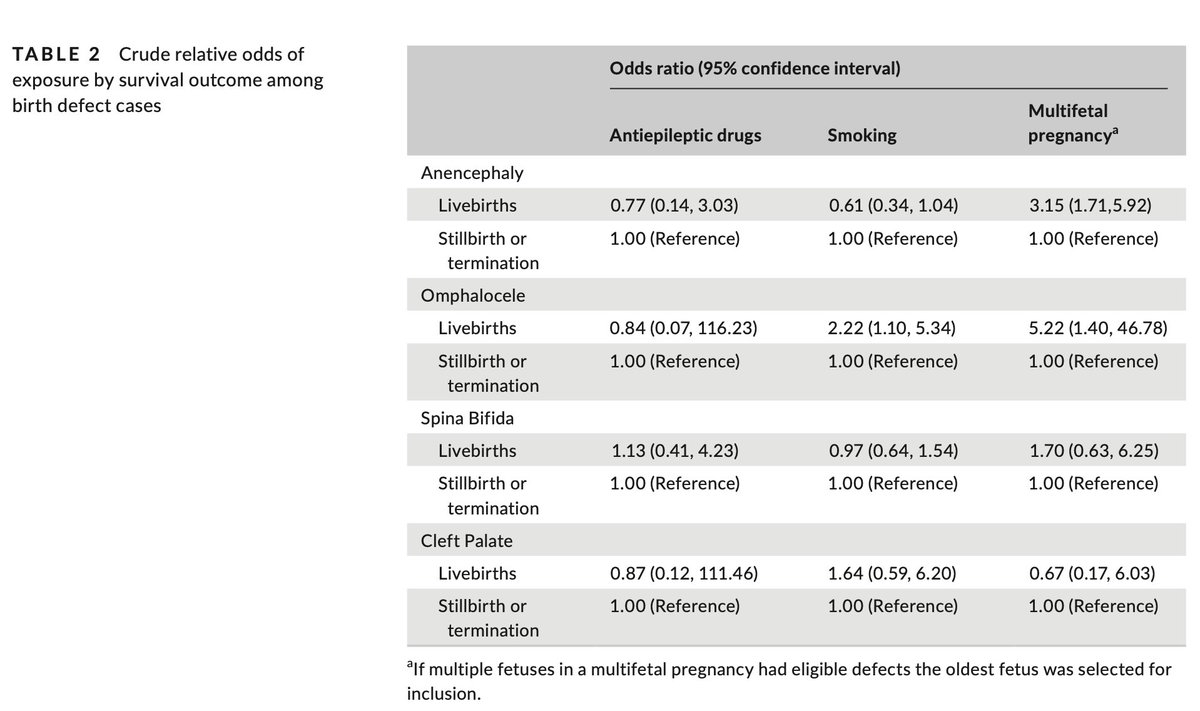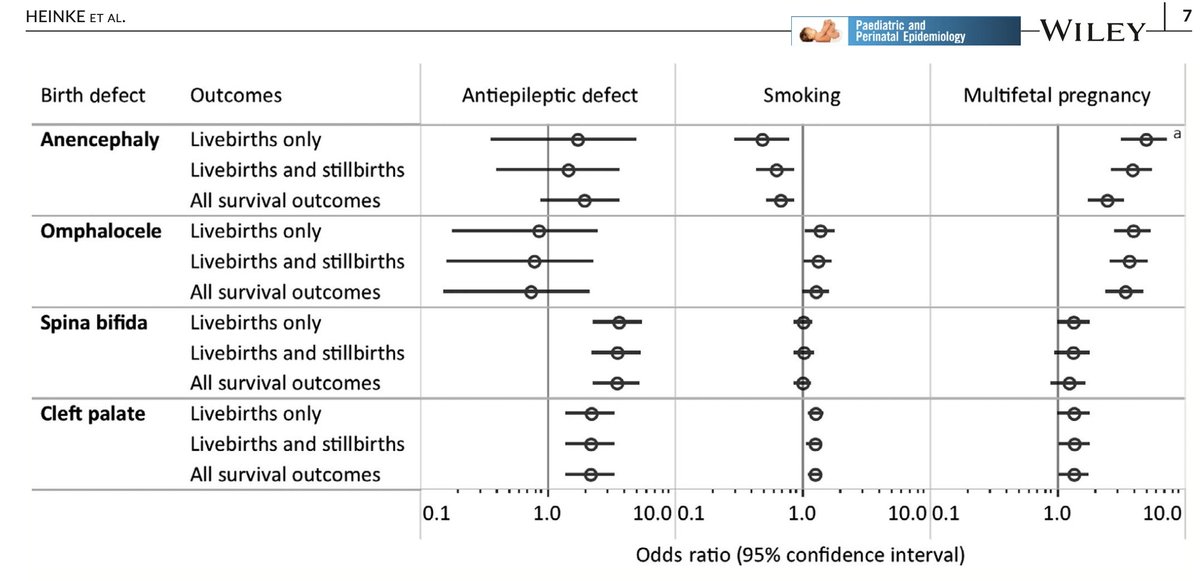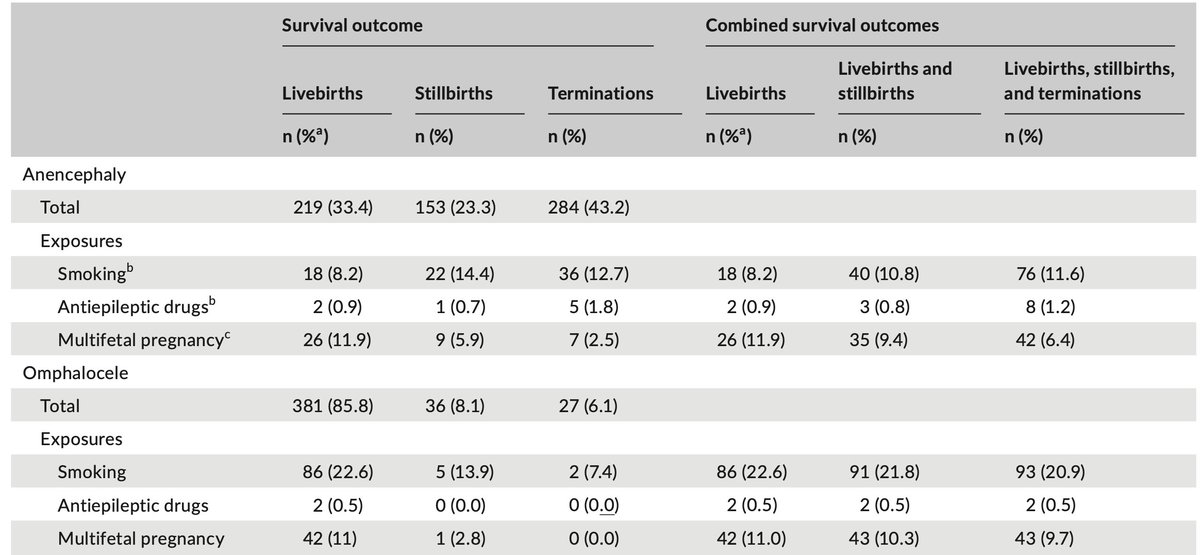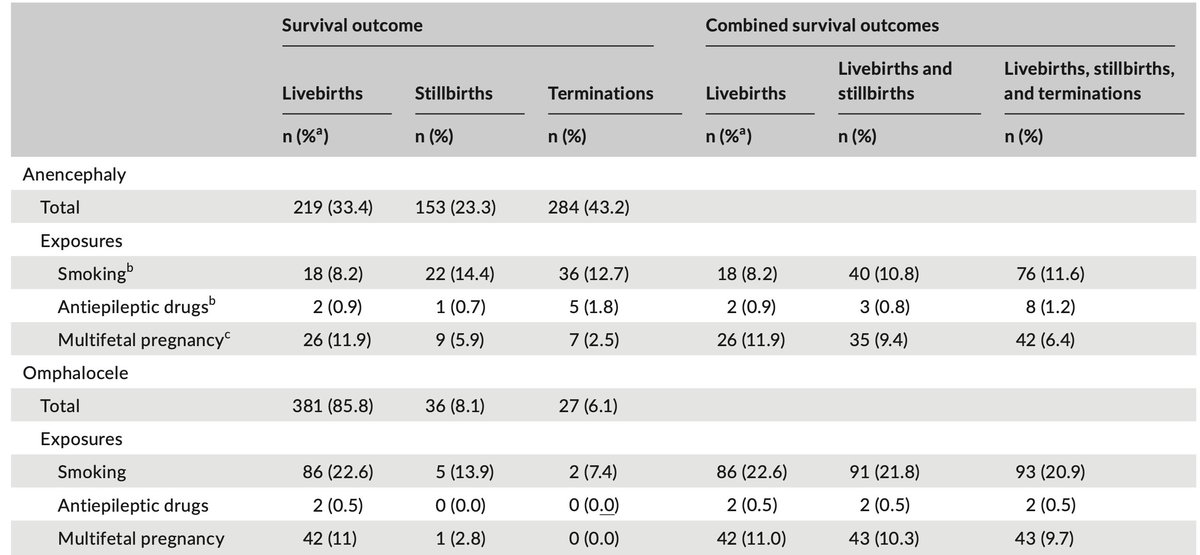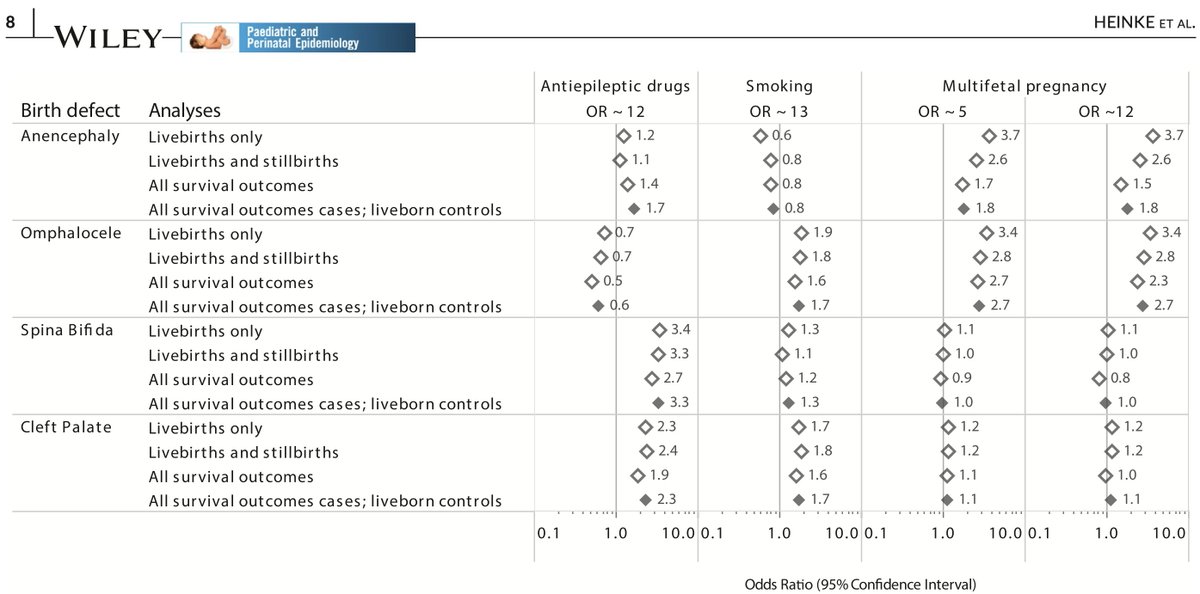Gather round #EpiTwitter (but not too close!) for a tour of my paper investigating the when's and why's of selection bias in birth defect epi. 👇🏻
1/🤷🏼♀️
onlinelibrary.wiley.com/doi/10.1111/pp…
Who becomes pregnant? Who stays pregnant? Who delivers too soon? Who has an induction?
Is the population in your study a biased sample?
2/
link.springer.com/article/10.100…
Because specific birth defects are rare, we need huge samples to do meaningful studies. But many times data sources with these properties only have live births.
Can we still do valid studies?
3/
But not just "can we do valid studies?" But also "WHEN can we do valid studies?"
And so was born this paper, currently out ahead of print @PPE_Journal!
4/

Say we are looking at a medication.
That medication could cause a birth defect which may decrease the probability of being born alive *AND* may independently affect survival.
5/
Maybe we can erase some of those arrows and voila! No selection bias!
But maybe we can't - how far off is our answer then?
7/
8/
First, we picked birth defects with different effects on survival for analysis (% live births):
Cleft palate (98%), spina bifida (88%) , omphalocele (85%) anencephaly (33%)
9/
Smoking (moderate for both), antiepileptic drugs (strong for BD, low for survival), and multifetal pregnancy (moderate for both)
10/
I know, it's a lot. But hang in there - it gets interesting!
11/
We couldn't look at this for controls bc this study only has live-born controls. 😱
I know... I know... But it's fine. Trust me. We'll come back to why.
13/
Cleft palate became the reference (survival apx no BD)
Anencephaly (OR 0.007, 95% CI 0.004, 0.01), omphalocele (OR 0.09, 0.06, 0.15), and spina bifida (OR 0.10, 0.06, 0.15)
14/
There's a strong association between omphalocele & live birth (OR=0.09)
&
For live birth by exposure (OR=2.2 for smoking & 5.2 for multiples) among omphalocele cases
So what gives?
18/
Just like controls need to be representative of the population from which the cases arose, so do the cases!
Or rather, the exposure distribution in the cases in your strata needs to be representative.
22/
When you select a small portion of cases in which to examine your question of interest.
In the larger strata, results should be pretty unbiased - certainly within measurement error range.
23/
This is why adjusting for everything can cause trouble.
24/
For birth defects where most cases are live born, it appears we are very likely to get good estimates even in seemingly dicy situations. But it's best to exclude highly fatal defects.
FIN!
Why doesn't it matter that we only have live born controls?
Doesn't the population from which the cases arose include normally formed fetuses who didn't survive to live birth?
YES! It's just that they're *such* a small portion that it's NBD.
Don't believe me? 👇🏻
This paper took more revisions than I can count!
Desk reject = 1
Reject after review = 1
Major revisions = 1
Minor revisions = 1
Time from first sub to publication: 1 yr 3 months
And that doesn't count the 5 million internal revisions.


